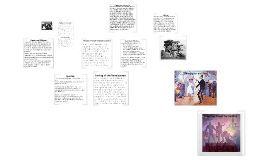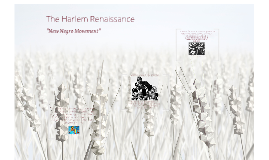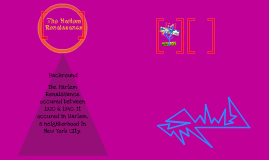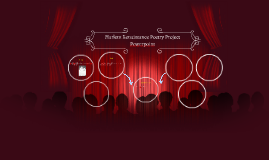Harlem Renaissance
Transcript: The Harlem Renaissance was originally called the Negro Movement and was a literary and intellectual exposure that established a new black identity of culture between 1920s and 30s. Any form of expression in that age was very limited for African Americans, but creative expression was offered, even due to the extensive racism and depressing economic factors. Specifically literary, and in some form jazz was a direct explosion. The Harlem renaissance came about in a time period between the first World War and Great Depression. This was a great time where the economy is growing and cities were over populating, mainly in the North. Southern blacks migrated to the Northern urban cities; speficically Harlem in Manahattan attracting almost two hundred thousand blacks, instantly becomign the largest conencentration of African-Americans in the world. Much literature was racial pride that grew from the idea of the new image of a Negro. This "New Negro" believed that intelligent writing and producing of literature would challenge the racist and stereoptes applied to them and advertise improvement or social politics that could promote the African Americans. Many literature were influenced by: Slave experiences the formation of stereotypes effects of politically installed racism the difficulties of writing for and recieve approval from white audiences. and the overall challenge of explaining the life of a typical black in urban North. Folk roots and culture materialized as well. Folk materials and spirtiatuals gave a good source for the artistic and intelligent imagination, as well as free blacks from the mental and physical reminence of past conditions. In Jazz and the blues, the structure were used to express sorrow and pain. The challenges and difficulties of life for African Americans was more than just a great source of inspiration for literary works like articles, newspapers, etc. THey were huge writing topics that were spawned into books and weekly articles. Stereotypical characters in these literary novels had much reality to them, forming many stories people could relate too. Inspirational writings, with relaxed tones, were spoken in poetry on one side. On the other, hard, political, realist newspaper and novel writings filled the streets and America, as a whole, concious of real life stakes. Magazines and Newspapers that were African American owned skyrocketed. This gave blacks a mainstream voice, one that was always masked and over shadowed by the constant and still present caucassion influences. Charles Johnson's magazine named Opportunity was the leading voice of black culture, he published a new promising black writer in every issue. W.E.B. DuBois's, The Crisis, also edited by Redmon Fauset, was a platform for the eventual great works of Langsot Hughes and Countee Cullen. The after effects, specifically music, are as real today as ever. Music wise, The Blues, then Soul/Gospel music, and eventually to today's rap music, all achieved their roots from jazz. Music from artists like Kanye West, Jay-z, and B.o.B. sample jazz like beats, as well as A Tribe Called Quest and other ninetys artists. Arts and Literature ways, isn't the same as prior but it is still living. Zorea Neale Hurston (January 7, 1891- January 23, 1960) "Once you wake up thought in a man, you can never put it to sleep again." Langston Hughes (February 1, 1902-May 22, 1967) "An artist must be free to choose what he does certainly, but he must also never be afraid to do what he might choose." Marcus Garvey (August 1887- June 1940) "There has been a movement where the leader has not suffered for the cause and not received the ingratitude of the people. I like the rest am prepared for the consequences." As the renaissance headed towards its closure, so did mainstreams thirst for Harlem's art and litterature. With the end of the need, so did the boosts from the "Roaring 20s" went with. The depression came fast and African Americnas were hit the hardest. Many were laid of and their homes foreclosed. Political black figures changed their perspective from arts and intelligence to social and fiscal problems. The temporary "truce" in racial tensions between both Whites and Blacks ended. Quotes The Harlem Renaissance Thank you More Information Another Visual for an Idea Common Themes Styles and Genre's Background Information The Soul of African American Literature Historical Effects Visiuals for an Idea Effects Ending of the Renaissance

















